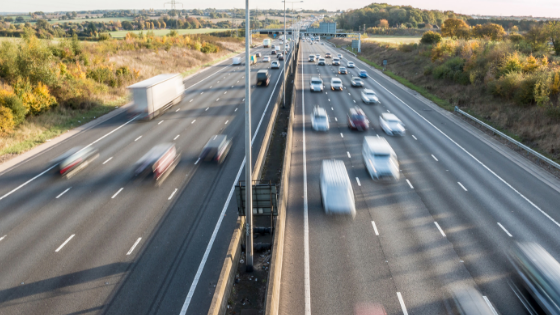The vast majority of motorists passed their test with no experience of driving on motorways. Learners have only been able to take lessons on motorways since June 2018, with an approved instructor in a car with dual controls. The change in the law was welcomed as an important road-safety measure by motoring groups such as the RAC and AA. But what about the rest of us who faced the daunting experience of venturing onto a motorway for the first time without the benefit of advice and guidance from a qualified expert on motorway safety?
Motorways can be confusing for the uninitiated, especially the layout and rules, and we had to try to work it all out for ourselves as we went along – not the best way to lay a solid foundation for safe motorway driving.
To help alleviate anxieties and correct misconceptions about motorway driving, we’ve put together this Beginner’s Guide to Motorway Lanes to help drivers use them safely. This guide will also serve as a useful refresher for more experienced motorists.
Why there’s no such thing as a fast lane or a slow lane
The first thing to remember on entering a motorway is that there’s no such thing as a fast lane or a slow lane. All lanes have a speed limit of 70mph unless otherwise indicated.
Motorways typically have three lanes:
Lane one – the left lane – is for routine driving.
Lane two – the middle lane – and lane three – the right-hand lane – are for overtaking.
Keep to lane one unless there’s a build-up of slow-moving vehicles in that lane, when you can move over to one of the other lanes. However, you shouldn’t stay there longer than necessary, particularly if you’re holding up traffic.
Some motorways have just two lanes, like a dual carriageway, with the right-hand lane for overtaking. Others have four lanes. Whatever the number of lanes, those to the right of the inside lane are for overtaking.
A motorway on a steep hill may have an additional crawler lane for heavy vehicles, which lose a lot of speed as they climb up a sharp gradient. Segregating these vehicles allows the rest of the traffic to flow more freely.
Motorways also have a narrower emergency lane to the left of lane one, separated by a solid white line. This part of the motorway – the hard shoulder – is a last resort where you can stop in the event of a breakdown or emergency.
How to use the hard shoulder
If you have to pull over onto the hard shoulder of a motorway, remember to indicate and make sure:
- Your wheels are turned to the left, so your car can’t roll into traffic.
- Your hazard lights are on.
- If it’s dark, use your sidelights.
- If it’s foggy, use your fog lights.
- Get yourself and your family to a safe place beside the motorway and call for breakdown assistance on your mobile phone. If your phone isn’t working, walk along the hard shoulder to the nearest emergency phone.
How to use smart motorway lanes
A smart motorway is a section that uses Active Traffic Management to reduce congestion in particularly busy areas. Besides having variable speed limits, smart motorways can also display “stay in lane” signs on the overhead gantries, when traffic is especially heavy. While it might be tempting to change lanes when other drivers appear to be moving faster than you, it can cause bottlenecks as traffic has to brake to let you in. Lanes on smart motorways can open or close automatically to improve traffic flow. A lane closure is indicated by a large red X overhead. Driving in these lanes could land you with a fine of up to £100. On some types of smart motorway, what used to be the hard shoulder becomes lane one, and is only closed to traffic in the event of an incident. On these all-lane-running smart motorways, a normal running lane is indicated by a broken white line.
Staying safe on the motorway
While learners can now get motorway experience, using a motorway hasn’t been introduced as part of the practical driving test, although it’s covered in the theory section. In other words, no motorist has to demonstrate hands-on competence on motorways to be allowed to drive on them.
We hope our guide to motorway lanes and how to use them properly will help you stay safe on the motorway in the future. You might also want to consider the Pass Plus voluntary scheme, which includes motorway driving.








